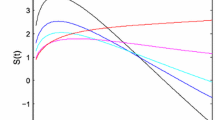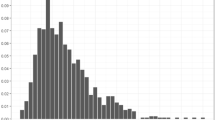Abstract.
Spike trains from neurons are often used to make inferences about the underlying processes that generate the spikes. Random walks or diffusions are commonly used to model these processes; in such models, a spike corresponds to the first passage of the diffusion to a boundary, or firing threshold. An important first step in such a study is to fit families of densities to the trains' interspike interval histograms; the estimated parameters, and the families' goodness of fit can then provide information about the process leading to the spikes. In this paper, we propose the generalized inverse Gaussian family because its members arise as first passage time distributions of certain diffusions to a constant boundary. We provide some theoretical support for the use of these diffusions in neural firing models. We compare this family with the lognormal family, using spike trains from retinal ganglion cells of goldfish, and simulations from an integrate-and-fire and a dynamical model for generating spikes. We show that the generalized inverse Gaussian family is closer to the true model in all these cases.
Similar content being viewed by others
Author information
Authors and Affiliations
Additional information
Received: 16 September 1996 / Accepted in revised form: 2 July 1997
Rights and permissions
About this article
Cite this article
Iyengar, S., Liao, Q. Modeling neural activity using the generalized inverse Gaussian distribution . Biol Cybern 77, 289–295 (1997). https://doi.org/10.1007/s004220050390
Issue Date:
DOI: https://doi.org/10.1007/s004220050390




